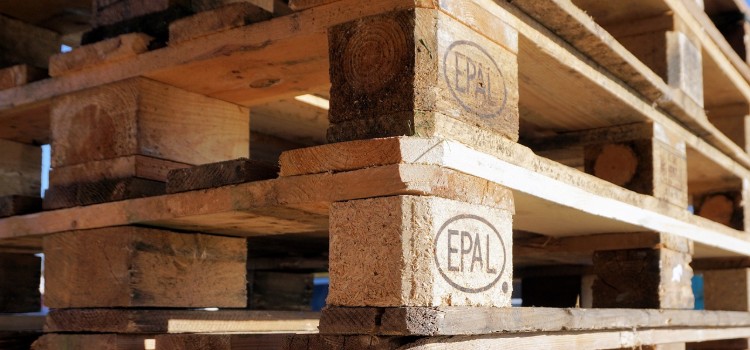
All pallets used for international shipping are made of wood that conforms to international standards or made of plastic. The cost of pallets is usually the first thing a shipper notices about using pallets as opposed to using floor-loaded containers.
The choice to ship with pallets should depend on a few factors. You will need to research if the ease and speed with which pallets are loaded and unloaded to see if this approach balances your expense. The choice may not be entirely up to you, as the shipper has to decide if the space taken up by pallets is available, or if the extra protection provided by pallets is necessary. This may come down to the type of goods that are being shipped.
Pallets Facilitate Easier Loading and Unloading of the Container
There’s typically one hour free of charge offered by the trucker when a shipment arrives at the consignee’s dock. Often there is also time spent waiting for dock access if other shipments are arriving at the same time.
Exceeding this time limit incurs extra costs, up to $75 per half hour, depending on the local going rate. This adds up when the unloading process takes two hours or longer, potentially because the goods are floor loaded instead of palletized. Unloading a shipment by hand is more time-consuming.
Conversely, some smaller factories won’t be able to accommodate pallets because they don’t have loading docks. They may have the manpower to quickly and efficiently load the freight into a container manually.
Pallets Protect Goods When Double-Stacking
Pallets are an effective way to allow cargo to be double-stacked and protect the bottom layer of a double-stack. The pallet helps to distribute the weight of the top layer evenly, so there is less likelihood of damage to the goods below.
When double-stacking a shipment of dense cargo, a pallet doesn’t necessarily help with load-balancing. The person in charge of packaging generally puts enough product in a container that the walls and ceiling keep it from shifting in transit. They may also add bracing if there is any space left over to prevent the cargo from sliding. That said, depending on the type of goods, the protection provided by pallets while double-stacking may save shippers a substantial amount of time.
Pallets Cost Extra
Using pallets when shipping internationally also means the suppliers must have appropriate pallets on hand. The associated expenses are built into the cost of the shipment, making the entire process of moving goods overseas more expensive.
All major countries participate in an agreement called ISPM 15 (International Standards for Phytosanitary Measures) to use only heat-treated wood for wood packing materials. This wood packaging includes crates, packing cases, and pallets. The heat-treatment mitigates insects and bacteria that may live inside the wood, reducing the risk of pest infestation. Conforming pallets, stamped with a designation showing they were heat-treated correctly, are more expensive than standard domestic wooden pallets.
Shippers working with big-box stores like Walmart and Target usually need to repack their goods to conform to the company’s standards upon arrival in the U.S. The pallets must be the correct size and configuration and have the necessary barcodes and Q Reader labels specified by the receiving store. Shipments that are not correctly marked and configured will be rejected, potentially causing shippers to deal with a chargeback as they reconfigure the shipment.
Palletizing your shipment overseas does not necessarily mean that you are killing two birds with one stone with a shipment that is ready for a store’s loading docks. The big-box store may not accept the standard IPPS stamped international pallets; therefore, it is not a viable money-saving tactic for most shippers.
Pallets Occupy Space in the Container
Paying for empty space is another valid concern for shippers. Many companies design their cartons to fit perfectly into the container, maximizing container space utilization. The container loses the space taken up by one or two layers of pallets. Along with the dead space between the top of the goods and the ceiling of the container. Removing the pallets could create enough room for additional products.
Pallets that conform to international standards certainly cost more, but they also facilitate quicker unloading and help shippers avoid fees associated with delays at the destination. They may occupy valuable space inside a shipping container, reducing the number of goods that can fit into a single shipment, but they also protect dense and heavy goods from damage.
The trade-off for shippers is clear; choosing whether or not to use pallets when shipping internationally depends on whether it’s beneficial. The ultimate goal of the consignee and the shipper is to get the maximum amount of freight to the destination safely in a single shipment. Depending on the type of goods and the port of destination in question, a shipper may be better off using floor loading instead of pallets.
For all of these reasons, now is an excellent time to consult with an experienced customs broker & freight forwarding expert when choosing between floor loading and using pallets.



